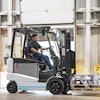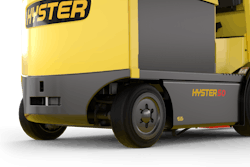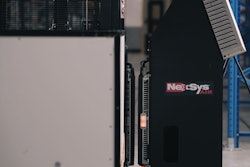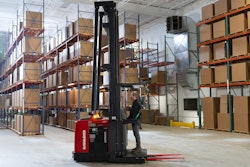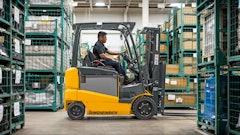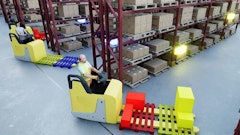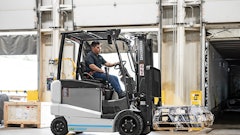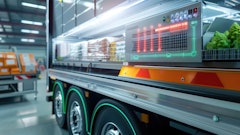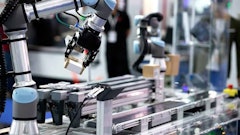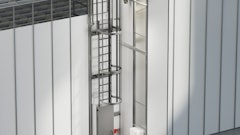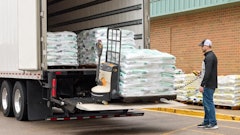
Each year in the United States alone, 80 million tons of food is considered spoiled or unsellable before it reaches the market. That equates to 30-40% of the food supply produced yearly in the United States. Supply chain and logistical issues account for almost 31% of all this food spoilage. That is a massive but preventable loss, and automation can be a powerful means to combat the issue.
In the fields, automation is already set to increase yields. Tools like automated sprayers on farms are allowing farmers to grow more with the same amount of land. U.S. farmers can produce 360% more with the same amount of acreage as compared to 50 years ago. But if our supply chain is wasting a large portion of what is being produced, increased output from farmers will just equate to increased waste.
At the root of this issue is a labor shortage, both on farms and in warehouses. Farmers produce more than enough crops, but if there is nobody to pick, package, or transport what is delivered, much of it ends up spoiling. It will come down to automation to make up the difference that human labor is unable to achieve.
Automation allows farmers and food distributors to streamline their supply chains, relying on less labor to get their goods to market. By reducing spoilage, more food ends up on shelves, increasing profits for everyone in the chain and reducing prices for consumers. While many farmers and suppliers think that automation is out of reach, when deployed correctly, they can be utilized by even smaller operations to reduce costs and increase their profitability. Let’s examine a few places along the supply chain where robotic solutions are already being deployed.
Making packaging simple: Case packing robots
One previously labor-intensive step on the supply chain is case packing, which is the process of placing finished products into boxes so they can be shipped to market. Previously, a human worker had to sort and pack the items correctly into their containers, then move that box to a pallet so those boxes can be palletized. This system was subject to limitations and human error while also being labor intensive, requiring many workers operating in tandem to get the job done.
One machine already working to improve this system is automated case packers. Automated packers can manage different product packaging styles, from pouches to tin cans to glass jars, while properly loading them into boxes for distribution. Using a vision-based infeed, these machines do not require a human to ensure they pack the boxes correctly. The latest automated case packers can identify a product out of position and re-orient it correctly to ensure that no product is damaged or missed.
Automated case packers remove the need for a human worker to physically spend their time and effort packing boxes and palletizing them, reducing repetitive strain injuries to workers. Simultaneously, they remove the need for 10-12 workers per production line, saving 80% of the traditional labor costs. Automated case packers are already increasing the scale and efficiency of food supply chains, leading to less spoilage and larger profits for both distributors and farmers.
A new type of warehouse worker: Robotic forklifts
Automated guided vehicles are already changing supply chains, especially in warehousing. Automated forklifts can load and unload goods without human drivers. These forklifts use sensors to detect where the goods are, positions themselves correctly, then pick up pallets containing boxes and move them to their correct locations.
Tools like this aren’t entirely new. Semi-automated forklifts previously used tape or wires mounted in the floor as a guide, but now advancements have made the autonomous vehicles even more capable. New sensors allow these lifts to detect the best route to get their products where they need to go while also avoiding people and obstacles. This has increased their safety, reliability, and scalability, as a fleet of these autonomous forklifts can do the work that formerly required multiple crews of people operating forklifts.
Manually operated forklifts suffer from issues that automated ones do not. The largest of these is the time it takes to get an employee trained to use a forklift. Forklift operators require certification from OSHA and their state and must complete hours of training to earn their credentials. This time investment leads to a drop in workers seeking this certification, resulting in a shortage of operators, which causes produce to sit and spoil as it waits on somebody to load or unload them. With autonomous forklifts, farmers and distributors no longer must rely on the human element to get their goods loaded or unloaded, saving both groups money by reducing spoilage.
Small changes for great reward: Autonomous carts
Another angle automation is already impacting in warehouses is internal transportation. Warehouses require many carts, which workers use to collect necessary items and move them to different locations for sorting. Workers formerly had to reach up on shelves and pick out the items themselves, then move the carts to their set locations.
Now, these carts can operate independently. Some robotic carts can pick specific items off specific shelves, then move those items to where they need to be. While workers previously had to reach for items on high shelves or carry something heavy, the cart itself can now handle that labor with a goal of reducing injuries.
Workplace injuries mean lost time and lost labor for the individual and the company. Just last year alone, workers reported 2.8 million non-fatal injuries, with an average loss of 5.5 days per injury. Each day lost forces slows the supply chain, costing farmers and distributors money as the products spoil. Robotic carts allow workers to incur less injuries, saving the company time and the farmers lost income.
Some companies are already integrating these machines into their warehouse operations, and in doing so, saving millions on workplace injuries as well as lost labor.
End benefit to farmers, wholesalers and the economy at large
The benefit automation can bring to food logistics is endless. Farmers are now able to get their goods to market faster and fresher than ever, and the workforce required to make that happen is shrinking. Automated machines are making human lives easier and greatly reducing the risk of injury. By fusing together automation and human ingenuity, food logistics and supply chains will serve as spearhead into the next era of human development.


